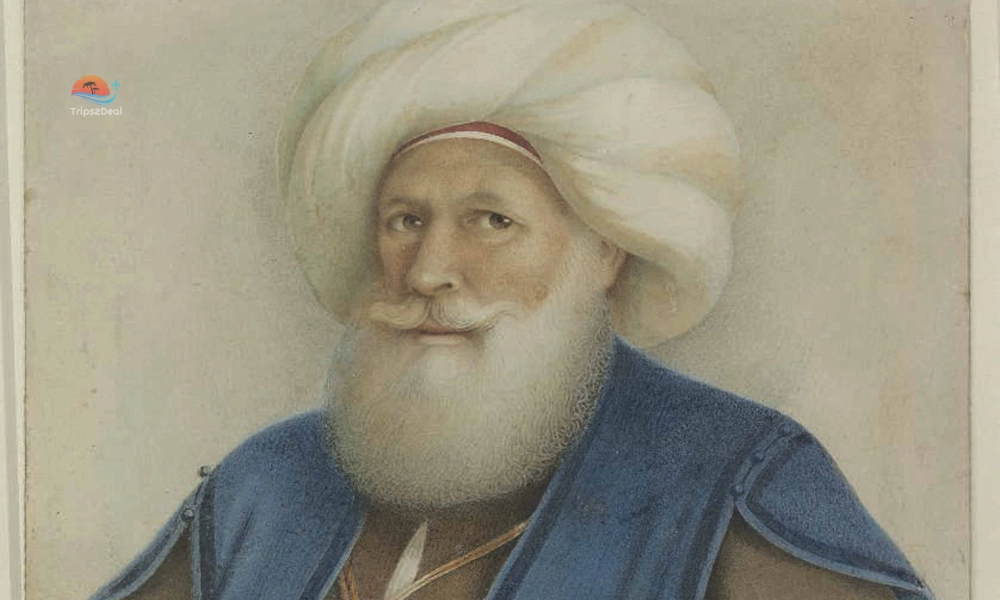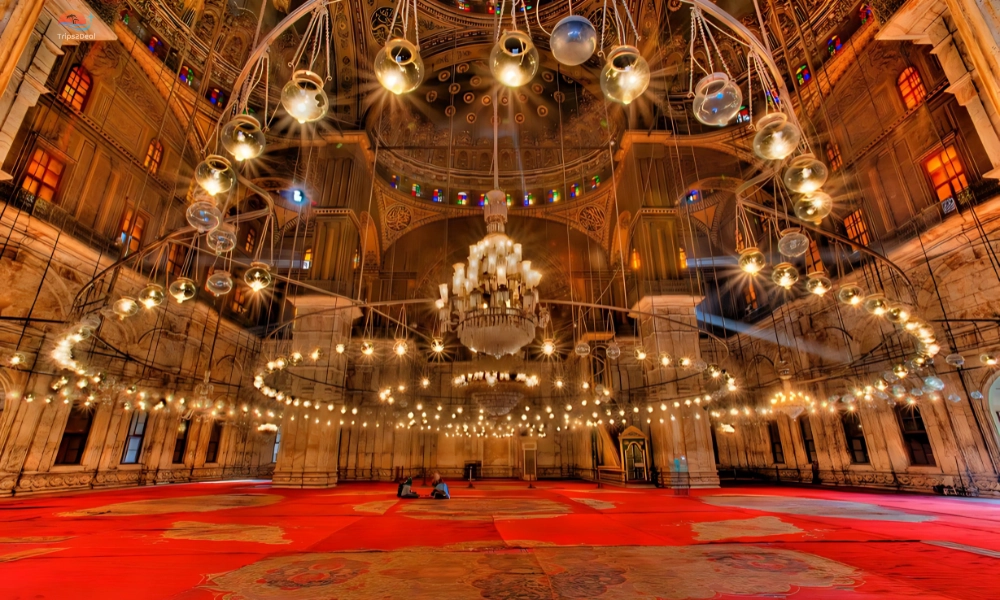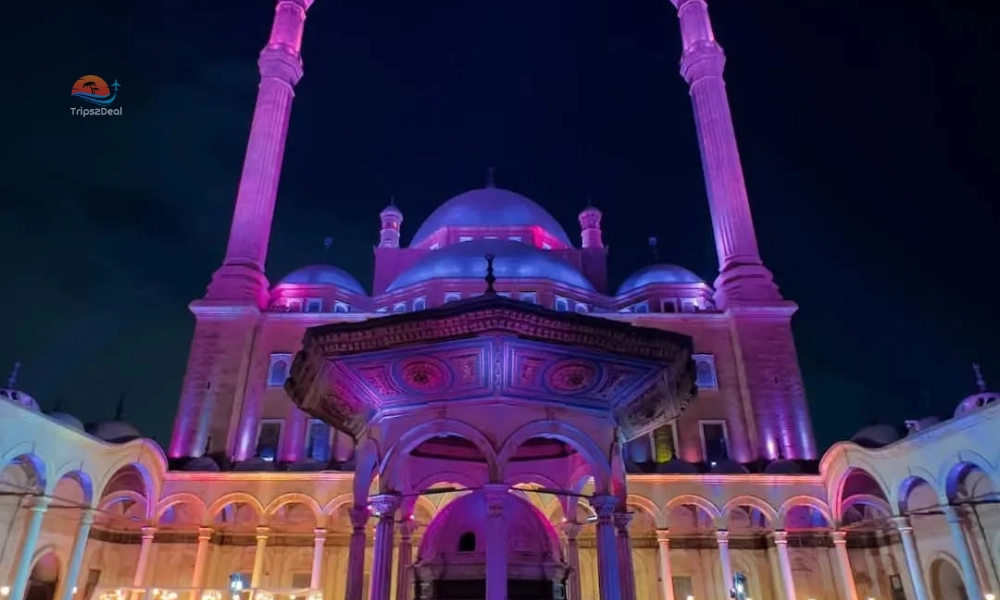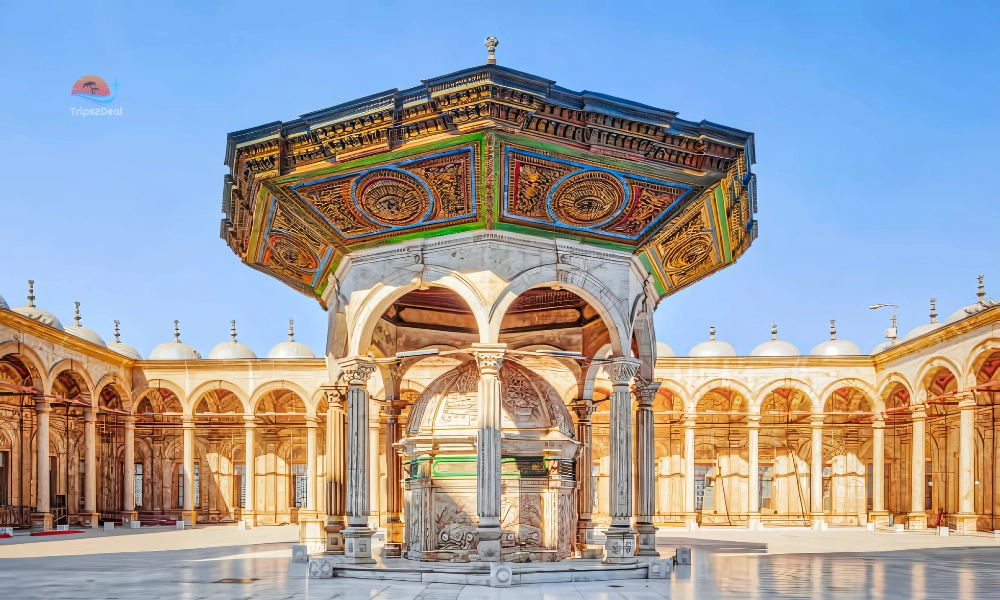Blogs

Muhammad Ali Mosque
Situated in the heart of the Citadel of Egypt, the Muhammad Ali Mosque Cairo is also known as the Alabaster Mosque and is considered the most well-known mosque in Egypt. Scenic views like Alabaster-clad domes, top-skying minarets, and historic architecture inside mosques become a cause of must-visit spots for those who are exploring Cairo's most ancient city and the soul of Egypt.
If you’re here in Cairo, after the mesmerizing scenes of Cairo's historical mosque architecture, or inspired by a photography gem, or wishing to explore the ancient legacy of Egypt, this mosque is an iconic symbol of art. This isn't a religious or scholarly spot, but a traditional and old monument delivering an essence of Cairo’s history and art. This guide has been compiled to deep dive into the significance of the Muhammad Ali Mosque, its architectural history, and Visiting tips.
Why It’s a Must-Visit Landmark
- Architectural Iconography: A rare display of pure Ottoman mosque design outside Turkey.
- Historical Significance: Erected by Muhammad Ali Pasha, the pioneer of modern Egypt.
- Strategic Setting: Nestled within the Salah al-Din Citadel, itself a UNESCO World Heritage Site.
Table of Contents
1. Historical Background of the Mosque
2. Construction of the Muhammad Ali Mosque
3. Architectural Design and Influences
4. Symbolism and Cultural Importance
5. The Mosque within the Citadel of Cairo
6. Preservation and Restoration Efforts
7. Visiting the Muhammad Ali Mosque Today
8. Photography, Views, and Nearby Attractions
Closing Summary: Why Does the Mosque Still Significant For the Travellers?
1. Historical Background of the Mosque
Who Was Muhammad Ali Pasha?
Muhammad Ali Pasha (1769-1849) was an Albanian-born commander in the Ottoman army. He just held the power in 1805 and he was named as the founder of modern Egypt. In the very beginning, he kicked out the French from the area, and stabilized his ruling. He started ruling against his rival Ottoman empire and Mamluk emperorship.
His transformative reforms included:
- Modernizing the Egyptian military, introducing European training and equipment.
- Investing in agriculture and irrigation, notably expanding cotton cultivation.
- Establishing modern schools and sending students abroad for technical and scientific training.
- Expanding Egyptian territory into Sudan, Syria, and parts of Arabia, enhancing regional influence.

19th-Century Egypt: Political & Cultural Context
In the start of 1800, Egypt was ruled by autonomous administration, lessening the power of the Ottoman empire while normalizing the Ottoman culture and traditions. Thus, Cairo was becoming a center of commerce, learning and diplomacy.
After this case, Muhammad Ali started investing in the mosque between 1830 and 1848, as its a symbol of religious center and icon of political legitimacy. He started construction over the demolished building of the Mamluk empire inside the Citadel, and gave a new, modernized and advanced look in design by inspiring Ottoman art.
2. Construction of the Muhammad Ali Mosque
Timeline & Purpose
- Initiated around 1830, construction continued through 1848, with ornamentation completed later under Said Pasha (~1857)
- Built for multi-fold purposes:
- As a prayer house,
- A political landmark replacing the Mamluk throne hall,
- Serving as the tomb for Muhammad Ali himself.
Design & Influences
- Ottoman-trained architects, likely Yusuf Boşnak, oversaw the design, inspired by Istanbul’s Blue Mosque.
- French architect Pascal Coste had proposed a Neo-Mamluk design, but it was overridden in favor of Ottoman aesthetics.
Construction Challenges
- Built atop leveled Mamluk rubble in the Citadel's southern enclosure.
- Utilized vast quantities of alabaster, a fragile yet visually striking material, to revive Egyptian quarry industries.
- Elevation demanded strong foundational support for the mosque structure.
3. Architectural Design and Influences
Ottoman Grandeur in Egypt
Outside the boundaries of Turkey, the Muhammad Ali Mosque in Cairo is one of the well-known and iconic pieces following the Ottoman design and art. The floor contains a main central dome, around which are four sub-domes, depicting the architecture of the Sultan Ahmed Mosque, known as the Blue Mosque in Istanbul.
- Twin minarets: Rising approximately 84 meters (275 feet), they are among the tallest in Egypt and visible from most of Cairo.
- Expansive arcaded courtyard: Framed with elegant arches and marble flooring, ideal for both religious gatherings and architectural admiration.
- Stained-glass windows: Infuse the prayer hall with soft, colourful light, adding a European decorative influence to an Islamic form.
Materials & Interior Craftsmanship
The second well-known name of the Muhammad Ali Mosque is Alabaster. This is derived from its wide use of gleaming white Alabaster inside and outside the mosque in design. This material carved the design, making it more aesthetic for the new generation of tourists.
Interior highlights include:
- Two pulpits (minbars): One intricately carved in wood, and a later addition in marble, showcasing changing tastes over time.
- Grand chandeliers: Illuminate the main prayer hall, highlighting the richly decorated ceilings.
- Ornate arabesques and calligraphy: Merging Ottoman and Egyptian artistry.
- Copper clock tower: A 19th-century diplomatic gift from France’s King Louis Philippe, positioned in the courtyard.

4. Symbolism and Cultural Importance
A Political and Spiritual Statement
Along with a scholarly spot, this mosque was a symbol of political Egyptian modernization. It was built over the remains of the Mamluk building and converted from rubble to an Ottoman-style monument.
- Elevated Citadel location: A commanding view over Cairo reinforced the mosque’s connection to sovereign power.
- Architectural heritage: While distancing Egypt from Ottoman subjugation, the design still honored shared Islamic traditions.
- Alabaster symbolism: Signified purity, prestige, and a modern Egyptian identity
5. The Mosque within the Citadel of Cairo
Citadel Overview
The Citadel of Cairo, a heart of Egypt, mainly named as Salah al-Din Citadel, considered as one of the impressive cites in Cairo UNESCO sites and milestone of Egyptian legacy. This was initially constructed by Salah al-Din, in order to gain protection from invaders.
Strategic Placement
This strategic location was no coincidence, it symbolized both spiritual oversight and political dominance.
Key placement details:
- Replaced older palaces: The mosque took the place of the Mamluk-era palaces, marking a shift from medieval architecture to a modern Ottoman-inspired style.
- Panoramic visibility: The mosque’s twin minarets and alabaster façade can be seen from many parts of Cairo, reinforcing its role as a landmark and symbol of authority.
Surrounding Historical Structures
Citadel actually delivers a house of attractions of Cairo history and legacy, that’s why mosques don’t stay alone. There are various other visiting spots along the Muhammad Ali Mosque Cairo in the Citadel:
- Mosque of Sultan al-Nasir Muhammad: A prime example of Mamluk architecture with a contrasting low-profile design.
- Military Museum: Housed in former Ottoman barracks, offering insight into Egypt’s military evolution.
- Gawhara Palace: Once Muhammad Ali’s royal residence, featuring ornate reception halls and treasures of the era.

6. Preservation and Restoration Efforts
Historic Wear and Restoration Needs
Exploring the Muhammad Ali Mosque in Cairo is like discovering the two hundred years of environmental strain, as it is one of the most wished spots to visit among Cairo's historical monuments. Because Cairo is containing dust winds, high urban pollution levels, and rare occasional seismic activity is spreading widely and steadily in the environment.
At the end of the 19th century, there were some renowned issues found:
- Surface erosion: The alabaster cladding began losing its luster due to constant exposure to wind-blown sand and pollutants.
- Structural cracks: Minor seismic tremors and natural settling of the Citadel’s foundations created fissures in walls and domes.
- Wear to decorative elements: Stained-glass windows, wooden carvings, and marble details suffered from age and humidity fluctuations.
To cope with these issues and problems, the Egyptian government took strategic steps for significant restoration.
- King Fuad I (1931): Ordered repairs to structural cracks, minarets, and marble cladding.
- King Farouk (1939): Oversaw further reinforcement work, dome cleaning, and decorative restorations.
- Clock tower restoration: The French-gifted copper clock was refurbished to restore both its mechanical function and its ornamental appeal.
Contemporary Preservation Efforts
The Muhammad Ali Mosque has earned a lot of reputation and concern regarding advanced conservation methods between the late 20th and early 21st century. This helps in maintaining a historical aesthetic fulfilling the modern visitor's requirements.
Key initiatives include:
- Alabaster cleaning: Gentle, non-invasive techniques to restore the stone’s natural sheen.
- Stained-glass repair: Replacing damaged sections while preserving original designs.
- Courtyard and landscaping upgrades: Improving drainage, paving, and aesthetic harmony.
- Accessibility improvements: Discreet ramps and pathways added for easier access by elderly and disabled visitors.
- Lighting restoration: Installing energy-efficient lighting to illuminate architectural details during night hours.
Sustaining Both Aesthetics and Legacy
The preservative restorations of Muhammad Ali Mosque Cairo have more distincts efforts, making it beneficial in sense of structure and history, ideal for future generations. Using the traditional and latest craftsmanship processes to protect the Muhammad Ali Mosque as it is an icon of spiritual landmark, and world-class legacy art attraction.

7. Visiting the Muhammad Ali Mosque Today
Practical Information for Travelers
Among most attention grabbing destinations for visitors, the Muhammad Ali Mosque is one of the most viewed locations in Egypt. It is nestled in the Citadel of Cairo, where thousands of visitors come each week.
Opening Hours:
- Generally 9:00 AM to 4:00 PM for summer though hours may be adjusted during Ramadan and on major Islamic holidays (Egypt Government Tourism Office, 2024).
- Morning visits are recommended for cooler temperatures and softer lighting - ideal for photography.
Entry Fee:
- Access is included in the Citadel ticket.
- Current rates for international visitors: approximately 550 EGP for adults, with reduced pricing for students and local residents (Egypt Monuments, 2025).
Traveler Tip:
- Arrive before 10:00 AM to enjoy quieter courtyards, unobstructed views, and better access for interior photography.
Dress Code and Cultural Etiquette
As it is a religious spot, and the most well-known mosque in Egypt, the Muhammad Ali Mosque has a distinct and clear dress code.
Dress Guidelines:
- Shoulders and legs must be covered for both men and women.
- Women are encouraged to wear a headscarf; scarves are often available at the entrance for those who need one.
- Loose, breathable clothing is recommended due to Cairo’s warm climate.
Etiquette Inside the Mosque:
- Shoes must be removed before entering the prayer hall; plastic bags are often provided to carry footwear.
- Maintain quiet conversation and avoid using flash photography during prayer times.
- Respect prayer areas and avoid obstructing worshippers.
Enhancing Your Visit:
To enlighten your tour, you may enjoy a tour of other destinations spotted inside the Citadel of Cairo, like the Mosque of Sultan al-Nasir Muhammad, the Military Museum, and the Gawhara Palace. Combining an ancient exploration with classic rooftop views makes the Muhammad Ali Mosque not only an attractive glimpse, but a cultural mesmerization of Cairo's history.
8. Photography, Views, and Nearby Attractions
Photography Highlights
- From the Courtyard: Capture the mosque framed by sky and ancient stone.
- Inside the Prayer Hall: Highlight symmetry, arabesque patterns, and light from stained glass.
- Panorama: City view from courtyard revealing Cairo’s sprawling life and distant Pyramids on clear days (Happy Egypt).
Nearby Historic Sites
- Al-Nasir Muhammad Mosque (1318): Mamluk design counterpart (Wikipedia).
- Military Museum: Chronicles Egyptian armed history.
- Gawhara Palace: Ottoman-era royal residence with chandelier and throne collections.
- Bab al-Jadid Gate & Yusuf’s Well: Historic elements within the Citadel adding context to the setting.
Closing Summary: Why Does the Mosque Still Significant For the Travellers?
Whether you’re a traveller, a tourist, or love to explore nature, you’ll find real beauty inside the Muhammad Ali Mosque Cairo. It represents itself as a landmark symbol of Cairo historical mosques. This is a real vibe of Cairo’s architectural ambitions, scholarly expression, and integrating the Islamic heritage with bold political statements.
As it is a blend of religious destination and visual art, it delivers a pure essence, that how a historic art combines an identity, faith, and power. Exploring the whole mosque is like you’re finding the whole art of Egypt, where a story and a stone unite under one shining dome. For more guidance on tourism in Cairo’s most heartfelt and most-seeing locations, browse trip2deal.com.





